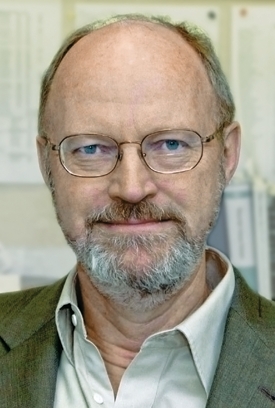Advertisement
Grab your lab coat. Let's get started
Welcome!
Welcome!
Create an account below to get 6 C&EN articles per month, receive newsletters and more - all free.
It seems this is your first time logging in online. Please enter the following information to continue.
As an ACS member you automatically get access to this site. All we need is few more details to create your reading experience.
Not you? Sign in with a different account.
Not you? Sign in with a different account.
ERROR 1
ERROR 1
ERROR 2
ERROR 2
ERROR 2
ERROR 2
ERROR 2
Password and Confirm password must match.
If you have an ACS member number, please enter it here so we can link this account to your membership. (optional)
ERROR 2
ACS values your privacy. By submitting your information, you are gaining access to C&EN and subscribing to our weekly newsletter. We use the information you provide to make your reading experience better, and we will never sell your data to third party members.
Intellectual Property
Metathesis Catalyst Showdown
Patent Fight: Nobel Prize-winning technology is at the center of messy infringement case
by Marc S. Reisch
November 11, 2013
| A version of this story appeared in
Volume 91, Issue 45
A patent dispute playing out in a U.S. court pits the discovery of 2005 Nobel Prize winner Robert H. Grubbs of Caltech and coworkers against a prominent chemical firm and Technical University of Munich President and inorganic chemist Wolfgang A. Herrmann and associates. The fight is over ruthenium-based olefin metathesis patents used to make hundreds of millions of dollars’ worth of plastics, specialty chemicals, and pharmaceutical intermediates each year.
ANATOMY OF A CONFLICT
1992 Robert H. Grubbs ▾ synthesizes first well-defined ruthenium-based metathesis catalyst.

2001 Materia licenses Grubbs’s olefin metathesis patent estate from Caltech.
2003 Materia and Cargill jointly work on transforming vegetable oils into chemicals using Grubbs catalysts. In 2008, they form Elevance to commercialize the work.
2005 Grubbs shares the Nobel Prize with Yves Chauvin and Richard R. Schrock for the development of olefin metathesis in organic synthesis.

2008 Wolfgang A. Herrmann ▸
is awarded first of two U.S. patents for certain ruthenium-containing catalysts. Both patents are assigned to Evonik.
2009 Evonik first sues Materia in U.S. federal court for infringing Herrmann’s patents and asserts priority over the Grubbs patents.
2013 Elevance opens chemical plant in Indonesia based on Grubbs catalysts.
2013 Court accepts Evonik’s ▾ broad patent claim interpretations; Evonik seeks judgment overruling the two Grubbs patents.

\
The intellectual property challenges came to light after a ruling by the U.S. Federal Court for the District of Delaware at the end of September—but revealed only late last month—in which Evonik Industries, the owner of Herrmann’s patents, won a victory on the interpretation of its claims.
Grubbs, along with Yves Chauvin of the French Petroleum Institute, and Richard R. Schrock of MIT, shared the 2005 Nobel Prize in Chemistry for their role in the discovery of olefin metathesis. Olefin metathesis is a reaction that promotes the formation of carbon-carbon double bonds—allowing clean, inexpensive, and efficient production of chemicals and materials.
The dispute began in 2009 when Evonik sued Materia, which had licensed Grubbs’s olefin metathesis patents, for violating a Herrmann patent. Evonik filed a second patent violation suit against Materia in 2010 for infringing yet another Herrmann patent. Materia disputed Evonik’s claims and also charged that Evonik had infringed on patents owned by Materia.
Both of Evonik’s suits against Materia center on Herrmann’s patents describing the composition of a catalyst consisting of an alkylidene ruthenium complex coordinated with an N-heterocyclic carbene ligand. Evonik is seeking unspecified damages and an order enjoining Materia from infringing the Herrmann patents.
At the heart of Evonik’s arguments, according to court documents, is that Herrmann filed his patents in Germany in April 1998, ahead of Grubbs’s patents that were filed in 2000 and 2001. However, the U.S. Patent & Trademark Office issued the Grubbs patents first because Herrmann’s patents were not filed in the U.S. until 2002 and 2003. Regardless, Evonik’s lawyers say that Herrmann is the first inventor and is entitled to the U.S. patents.
Mixed up in the lawsuits is Elevance Renewable Sciences, a company founded by agricultural products firm Cargill and Materia in 2008 and which makes specialty chemicals from plant-based oils via olefin metathesis. Evonik sought to prevent Elevance from using in its chemical plants catalysts that are based on Herrmann’s two metathesis patents.
Playing it safe, Elevance licensed Evonik’s disputed patents in July 2010, noted Andrew Shafer, the firm’s executive vice president. The firm continues to license metathesis catalysts from Materia and others. Other companies licensing Materia’s patents include Lanxess, which uses them for specialty materials, and BASF, which uses them for specialty chemicals.
Materia may still prevail over Evonik. In December 2012, the European Patent Office revoked one of the Herrmann patents involved in the U.S. case after Materia challenged it. Evonik has not responded to a C&EN request for comment on the European dispute.
If Materia loses the suit, its licensees have other options. “There are many different types of ruthenium catalysts,” says a consultant who requested anonymity so as not to jeopardize his business relationships with both companies.



Join the conversation
Contact the reporter
Submit a Letter to the Editor for publication
Engage with us on Twitter